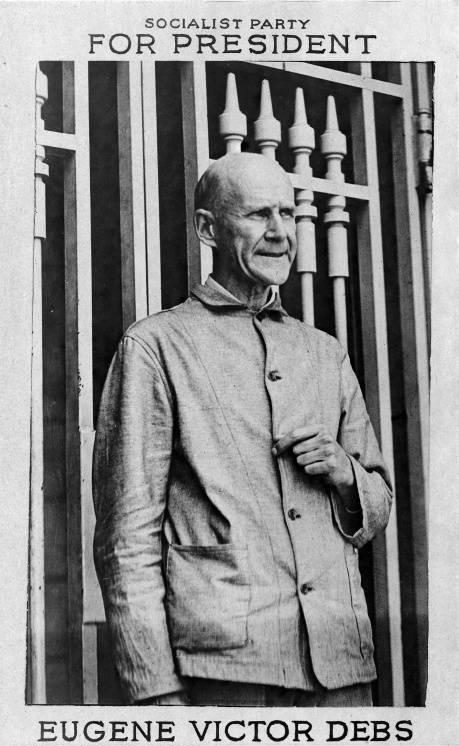In the summer of 1901, more than 100 men and women met in the Masonic Hall in Indianapolis, sang the “Marseillaise,” and founded the Socialist Party of America.. Most delegates had come to the party from Utopian socialism, Populism, or industrial unionism.

The party was the creation of Eugene V. Debs of Terre Haute and other leaders of the Social Democratic party uniting with the Kangaroo faction of the Socialist Labor Party (SLP) which, unlike Daniel DeLeon, head of the SLPR wished to try to convert American Federation of Labor members to socialism. The new party was certain that capitalism could not reform itself. Its founders confidently expected the American people to flock to socialism once it had been explained.
The early strength of socialism in Indianapolis owed much to the city’s sizable population. In 1890, German-born and first-generation German-Americans numbered about 25 percent of the city’s population. Germans who fled after the failed 1848 revolutions in their homeland were much more militant and radical than earlier emigres. Many German-American workers on the south side of Indianapolis became socialists.
Indianapolis was never a center of socialism in the United States or Indiana. It was, however, a major center for unionism (nine national unions had their headquarters in the city by 1905), and many union leaders were socialist-minded. But despite the presence of Debs and the prominence of Hoosier-born John Harriman, who had briefly attended in Indianapolis and was Debs’ running mate in 1900, Indianapolis played a minor role in the Socialist Party. For example, in the 1904 gubernatorial race in Indiana, only 4 percent of the votes in were cast for all non-major parties. The Prohibition Party often got more votes than the Socialist Party. In 1912, the Socialist Party in Indianapolis received 5,300 votes, but the Progressive Party received 20,200.
The Socialist Party nationally reached its zenith just before . And in Indianapolis’ 1920 gubernatorial race, all non-major parties received 2.8 percent of the votes combined. The national party collapsed during the . It did no better in Indiana. In 1936 only 4,000 people in Indiana voted Socialist; in Marion County, only 915 (0.4 percent) voted for all non-major parties. The Socialist Party as a political force was dead, although the less prominent Socialist Labor Party continued to draw votes in Indiana into the 1980s.
After , despite the efforts of Indianapolis socialists like , son of an Indianapolis pioneer in employee ownership of plants, the local Socialist Party remained electorally ineffectual. While there were committed individuals after 1950, socialism ceased as an effective force in Indianapolis.
*Note: This entry is from the original print edition of the Encyclopedia of Indianapolis (1994). We seek an individual with knowledge of this topic to update this entry.

Help improve this entry
Contribute information, offer corrections, suggest images.
You can also recommend new entries related to this topic.




